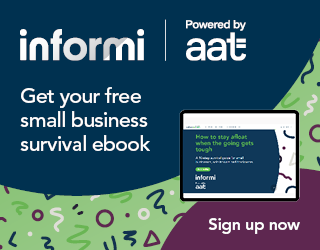With social media saturated with ads from ex-Love Island contestants and our TV screens full of commercials with A-list celebrities, you could be forgiven for thinking that influencer marketing is reserved for big-name consumer brands with huge marketing budgets. Yet, in reality, influencers can be a powerful tool for brands of all sizes, including those who sell B2B. Here, Sarah Evans, above, at Digital PR agency, Energy PR, explores the ‘real world’ side of influencer marketing and offers her advice to SMEs on harnessing the marketing power of trusted industry experts.
Influencers are everywhere, in every sector and they’ve got engaged B2B audiences just waiting to be targeted. What’s more, they can be a relatively inexpensive way of growing your reach and building trust compared with other marketing activities. However, in order to get the best bang for your buck, it’s essential to have a clear strategy in place before diving into the world of influencers.
Getting started
Whilst it might be tempting to dive straight into working with industry influencers that you know and admire, I’d always advise against starting with the influencers and working backwards. Instead, start with your audience. After all, they’re the people you want to engage.
To do this, you’ll need to take a deep dive to truly understand your target customers. Ask yourself: what are their pain points? How do they consume information? What platforms do they use? Who are they following and engaging with? Who influences their decisions at work and at home? Only once you truly understand your audience will you be able to decide who’s best placed to help you communicate and connect with them.
Working with smaller influencers
Bigger doesn’t always mean better. There are some huge advantages to working with influencers with a smaller following. In fact, niche, micro, and nano influencers have audiences that are up to 60% more engaged than bigger influencers. This is because these individuals are generally seen as more trustworthy by their audience, so followers are more likely to follow their advice and respond to their content. As a result, aligning your brand with these individuals is fantastic for building brand trust amongst niche audiences.
So, where can you find smaller influencers? The answer might be closer than you think. Your own customer base may well be teeming with ideal influencers for your brand. No one understands your audience better than your audience themselves and, with authenticity valued more than ever before, real endorsements from real people are extremely powerful for brands.
To identify potential ambassadors, think about who your ‘super’ customers are. Who are your biggest advocates, your most loyal purchasers? Would they be happy to share their story? Would they write a guest blog, take part in a case study, record a video or join a podcast? It’s likely that their story, told in the right way, could inspire others to take action.
Working with larger influencers
Larger influencers have their place too. If you’re looking to target a new market, reach a new audience, or shift the perception of your brand, bigger influencers are an effective solution. They’re great for broadening your reach, getting lots of new eyes on your brand, and can give your products extra kudos.
Big influencers, known as ‘macro influencers’ can be found in a range of places. As a starting point, I’d recommend conducting research into the podcasts your audience are listening to, who they’re engaging with on social media and online, the speakers and hosts at established industry events, and the spokespeople who are leading industry conversations in the media.
Tips for getting the most out of B2B influencer marketing
- Co-create content – B2B audiences crave content that helps them do their jobs better. But the web is saturated with generic, meaningless content. So, use your influencers’ industry expertise to help you create valuable resources that will genuinely resonate with your audience. This could take the form of short videos, LinkedIn posts, case studies, panel discussions, guest blogs, or even more detailed reports and guides.
- Build an ongoing partnership – long-term partnerships are more beneficial for all parties. So, consider ways to make your influencers a part of your business in the long-term in a meaningful way. For example, could you offer them a Creative Director role?
- Listen to their ideas on strategy – chances are, the industry influencers you choose to work with will come from the same world as your target audience. Use this first-hand insight to your advantage. Ask for their recommendations on how they recommend you connect with your audience on an ongoing basis.
- Involve them in product testing – B2B influencers are often experts in their field, as well as potential customers. So, they could also be valuable in helping you to improve your product development process.
- And, last but not least, find out what works, then repeat, repeat, repeat!



